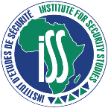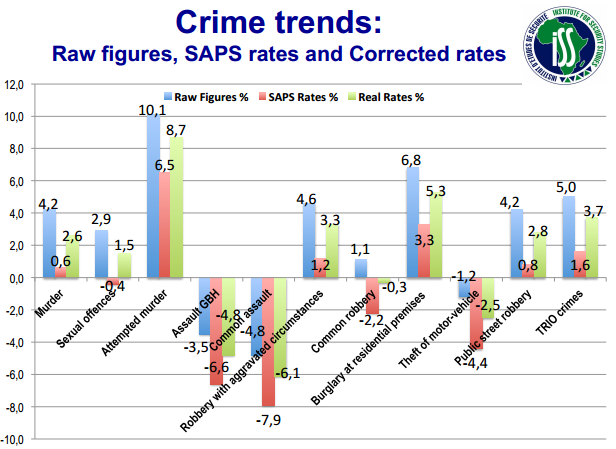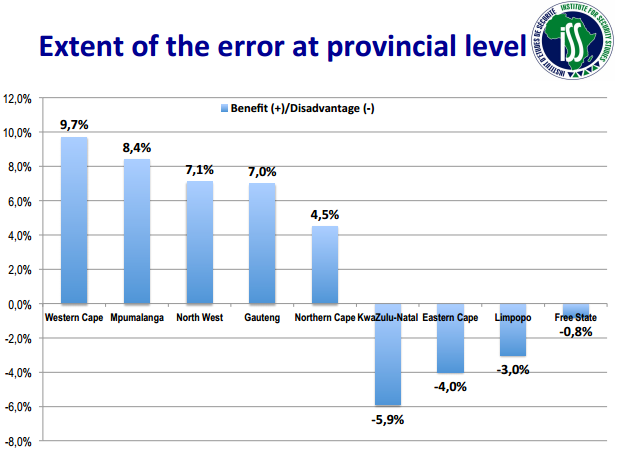Getting the most out of South Africa's crime statistics
South Africa's 2012/13 crime trends reported by police on 19 September 2013 were incorrect because officials at a national level made a serious statistical error, the Institute for Security Studies (ISS) said on Wednesday (6 November).
The ISS has called for a formal independent inquiry into why the crime trends were miscalculated.
'What we are asking is why did this error occur and at what level was it sanctioned?' said ISS Governance, Crime and Justice division head Gareth Newham. 'The effect of this miscalculation is that it downplays the extent to which certain serious violent crime categories are rising in SA, while exaggerating those categories that are decreasing.'
During the September 2013 release of the latest SA crime statistics (for 2012/13), SAPS National Commissioner Gen Riah Phiyega said crime was under control, and she delivered a message of hope and confidence to South Africans.
'This ‘message of hope' is based on the reduction of crime that mostly occurred between 2002/03 and 2010/11. An accurate reading of the most recent crime trends shows most categories of serious violent and property crimes are actually increasing,' Newham said.
'The latest statistics clearly show that in the past year more people were murdered and attacked in their homes, businesses and on the streets than in the previous year. In addition, more houses and businesses were broken into and burgled. For the first time since 1994, the crime ratios released by the SAPS can be proven to be statistically incorrect. In the past there has been evidence of the statistics being manipulated at some police stations, but not enough to have a notable affect on national figures.'
'This is the first time errors in statistics have occurred at police head office. What it means is that South Africans don't have an accurate picture of the threats they are facing,' Newham said. 'For example, the SAPS National Commissioner says business robberies are going down when they are in fact going up,' he told an ISS seminar in Pretoria.
The miscalculation is more pronounced when it comes to determining crime trends at a provincial level. For example, the official crime statistics say that murder in the Western Cape only increased by 0,5%. In fact, murder in that province has increased by 10,1%. Similarly, the official statistics say that attempted murder in Gauteng went down by 5,5% when in fact this crime increased by 1,8%. The ISS said an inquiry should be conducted by independent statisticians from SA universities and Statistics South Africa.
'Following the inquiry, we ask that the police correct the crime trend ratios, and share with all South Africans their plan to ensure crime figures are reported accurately in future. Police leadership has a duty to protect the public and to provide accurate information about crime and the risk it poses to individuals, communities, business and all people in South Africa,' Newham said.
Errors in the latest police crime statistics are the result of inaccurate population figures being used to compare the change in crime ratios between 2011/12 and 2012/13. Presenting crime statistics as a ratio of crimes per 100,000 people is an accepted international reporting method to give a better sense of the risk of crime to various sectors of the population. Working out the crime trends through changes in the crime ratios is also acceptable, but the trends can only be accurate if the correct population figures are used for each year. Unfortunately, this was not the case when the SAPS calculated the trend using the change in crime ratios between 2011/12 and 2012/13.
The SA population figure used by the SAPS to calculate the crime ratios in 2011/12 came from population estimates worked out by Statistics SA, based on the 2001 census. Using the 2001 census, Statistics SA estimated that there would be 50,6 million people in South Africa in 2011. But data from the more recent 2011 census, released in October 2012, showed there were actually 52,3 million people in South Africa in 2011, which is 1,7 million more than the 2001 estimate. Without updating the 2011/12 crime ratios with the correct population figures, SAPS then compared the correct crime ratios for 2012/13 with the incorrect ratios for 2011/12. This resulted in the police understating the increase in serious and violent crimes.
The statistical error means crime trends between the last two years as reported in September are 'wrong in every category', Newham said. In some provinces, this has led to a rate of error as high as 9% between the official figures and the actual figures. SAPS has qualified statisticians who know how to get the calculations right, and would be able to make senior managers aware of the importance of using the recalculated and correct population estimates, he said.
'But SAPS released a crime trend analysis based on statistical errors that they should be aware of. This is why we are calling for an inquiry,' Newham said. The day after the release of the statistics, the ISS wrote a letter to Gen Phiyega highlighting the error and offering to explain and discuss it. A response to this request has not been received. A SAPS spokesperson subsequently made a public statement acknowledging that the population estimates had not been updated but did not acknowledge that this was a problem.
He was quoted as saying 'the argument is that we should have used this restated, estimated figure. This would have required us to adjust the crime ratios of 2011/12. Based on our approach, this is not necessary... We should only apply the new population estimates, which are based on the 2011 census results, from the 2012/13 financial period onwards.' He went on to say that 'the police had a particular approach to the statistics, while analysts had their own". He said further that "we don't agree on the approach and there is no policy to guide either of us. In other words, in ten years' time, the country could be subjected to the same confusing debate'.
Newham said: 'The SAPS spokesperson has acknowledged that they did not correct the 2011/12 crime ratios, but portrays the problem as one of interpretation and a lack of policy, as opposed a factual and statistical error. Given the SAPS National Commissioner's publicly stated commitment to restoring the integrity of the SAPS, this is an alarming statement. Refusing to correct errors of fact when these errors mislead the population about the crime trends can only raise questions about stated commitments to integrity.'
On 16 October 2013 the ISS invited the SAPS through the national spokesperson to participate in today's seminar (Wed 6 Nov), and they declined.
Fifteen years ago, in 1998, a ministerial review committee called for a national reference group of police and independent crime and statistics experts to meet quarterly to ensure South African crime statistics are accurate and credible, and to ensure they are presented in a way that government departments, community organisations and businesses are able to act upon the information.
It is unlikely that the problems of incorrect crime trend ratios would have occurred if this recommendation had been acted upon. It is high time that crime statistics are recognised as an important resource that can build partnerships to better address crime.
'This can only happen if they are accurate and released more frequently so they can be better used by all those who have a role to play in working towards community safety,' said Newham.
***
Presentations:
Dr Chis de Kock (Maj.-Gen, Ret.) was responsible for the SAPS crime statistics for 18 years until his retirement in April 2013.
Ms Lisa Vetten, a renowned researcher on gender-related violence in South Africa.
Mr Gareth Newham, Head of the Governance, Crime and Justice Division at the Institute for Security Studies.
This event was made possible through funding provided by the Hanns Seidel Foundation. The ISS is also grateful for the support of the following core partners: the governments of Norway, Sweden, Australia and Denmark.
Statement issued by the ISS, November 6 2013
Click here to sign up to receive our free daily headline email newsletter



